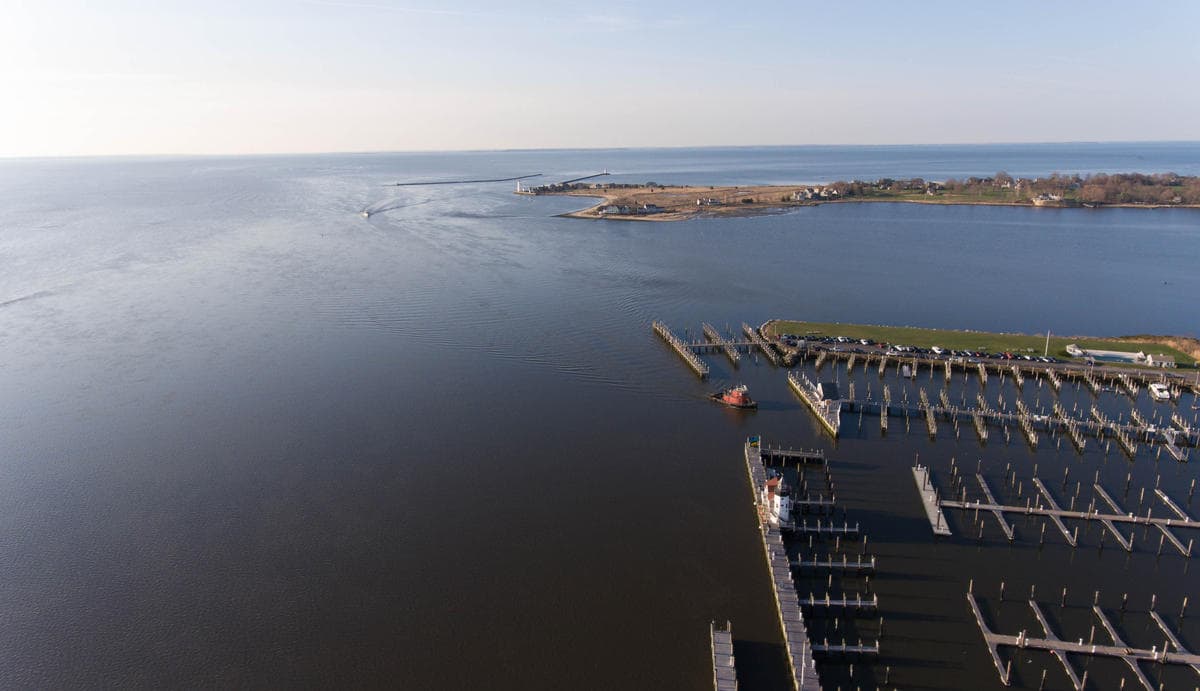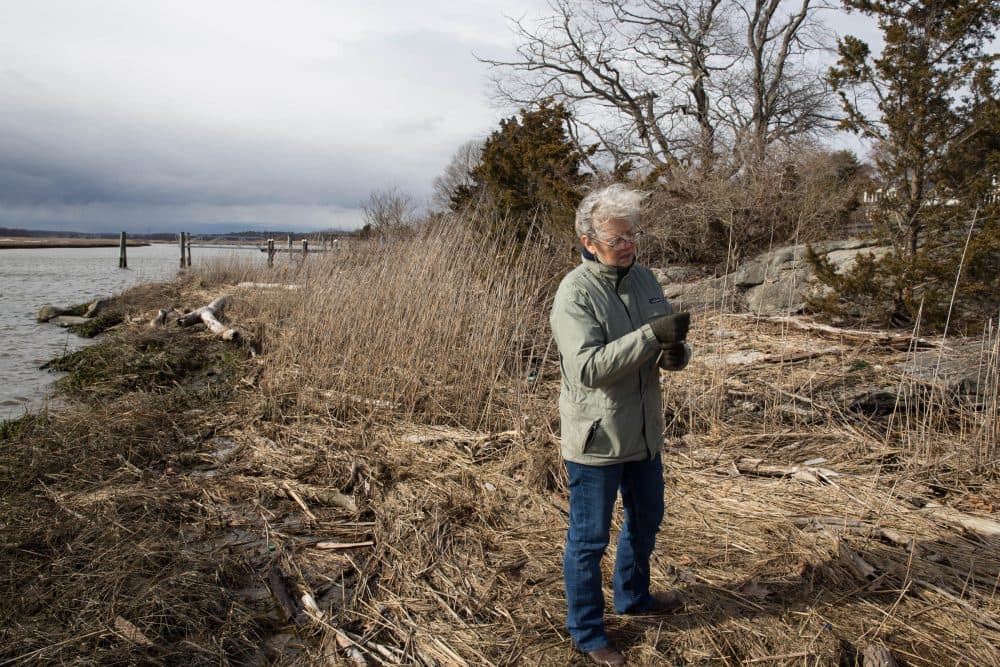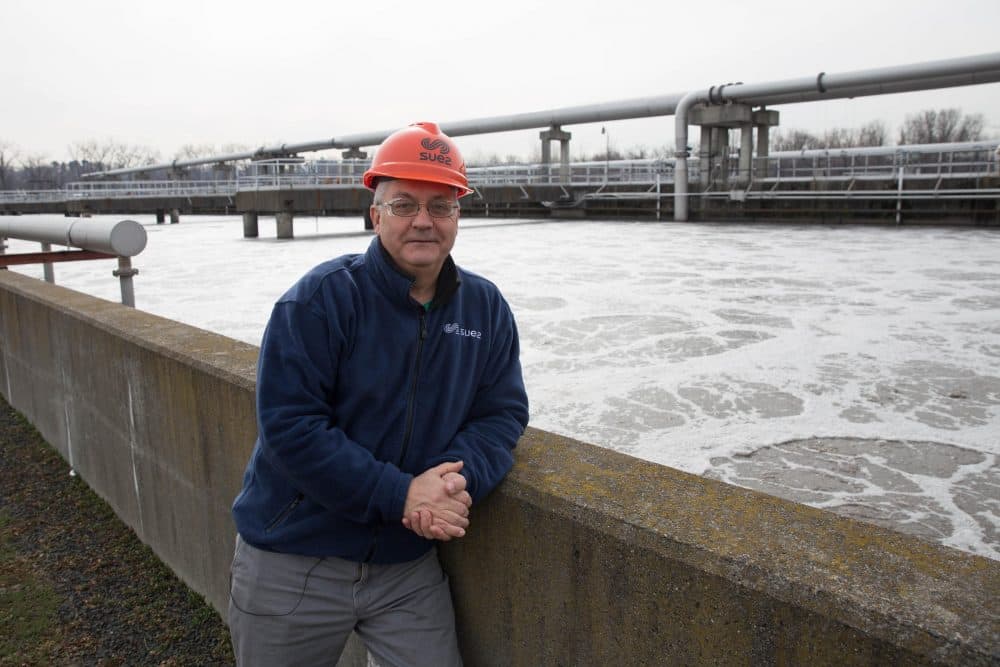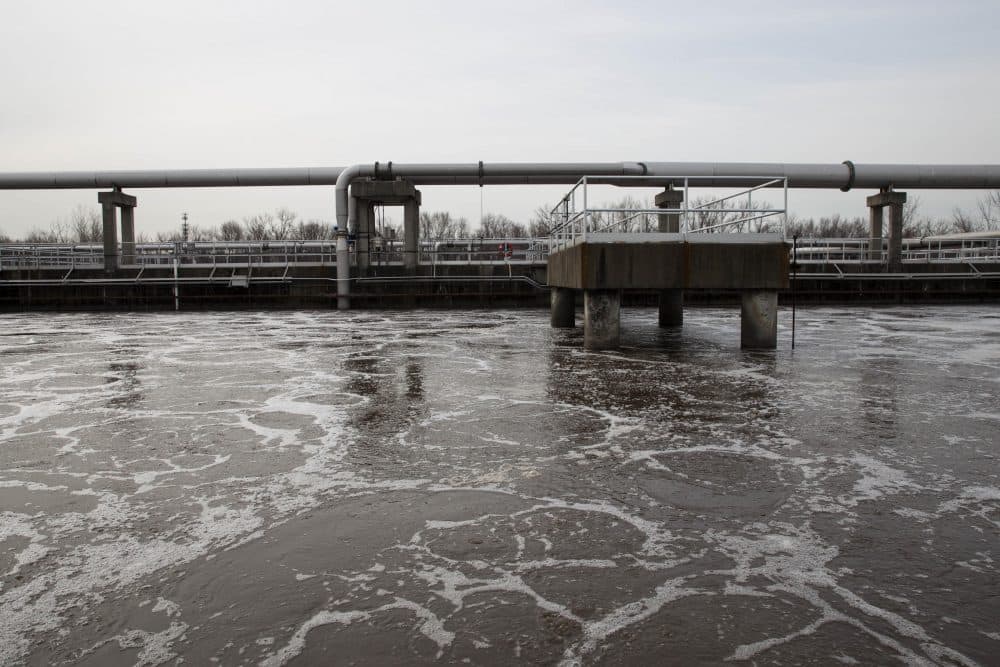Advertisement
How Nutrients In The Connecticut River Become Pollutants In Long Island Sound
Resume
By the end of the year, the Environmental Protection Agency is expected to announce new limits on the amount of nitrogen that wastewater treatment plants in Massachusetts, Vermont, and New Hampshire can release into the Connecticut River.
That could mean a small tweak of a system, or costly plant retrofitting. No one knows for sure until the limits are announced.
Nitrogen is a pollutant that’s blamed for fish die-offs in Long Island Sound, where the Connecticut River winds up. The river is the largest freshwater tributary to the salty Sound.
Nitrogen in the river is not considered a pollutant by federal clean water standards. But it quickly becomes a pollutant in saltwater, where nitrogen causes rapid algae growth.
"When that algae finally consumes all of the nitrogen, and the nitrogen comes in pulses ... they grow like crazy," said Judy Preston, a researcher with the EPA’s Long Island Sound Study and at the University of Connecticut.
The algae's life cycle, she said, saps oxygen away from other vegetation and aquatic life.
When algae die, they sink. “That's where the bacteria comes in, and starts to consume the dead algae,” Preston said. “And in doing that, they're consuming oxygen.”
And, without oxygen, over the last few decades fish have suddenly died by the thousands. Marsh land has deteriorated. The whole system suffers, Preston said.
In 2001, the EPA set a nitrogen reduction target for the Sound itself, regulating wastewater treatment plants in Connecticut and New York. As problems continue, environmental officials and others are looking at plants in the upper Connecticut River watershed for additional reductions.

'You Could Jump Right In'
No one who works in wastewater treatment wants to witness a watershed being killed off, including Mickey Nowak, who delights at the sight of people fishing in a river he's helped to keep clean.
The Connecticut River plant he oversees is opposite the Basketball Hall of Fame in Springfield, Massachusetts.
On an early spring morning, Nowak pointed to giant pools of treated wastewater, the "effluent" that will be sent back into the river.
“Looks like you could jump right in!” Nowak said.

New England's second-largest regional wastewater treatment facility serves seven towns, and is about 70 miles from Long Island Sound. At the end point of the sewage treatment process, up to 67 million gallons of effluent go into the river every day.
“This is a nice effluent,” Nowak said. “It does quite nicely in the river. I’m sure the nitrogen is under 10 milligrams per liter,” he added, with full knowledge that this plant and others from here to northern Vermont will soon be issued new EPA nitrogen loading regulations.
Breaking It Down
Back in Nowak’s office, he took on a role of science teacher. Three jars were set up on a table. One was raw sewage, the “influent” — what comes into the plant — and it was remarkably clear. Nowak laughed at the observation, and said, “Well, it’s mostly water.”
He described what’s flushed down toilets and dumped down drains genteelly as “industrial and domestic flow.”
Toilet paper in the jar was microscopic. It’s a product manufactured to break down, Nowak said. Flushable wipes are not, he moaned. And he pointed out nitrogen in this sample. It’s in what we eat.
“Ammonia is your most toxic form of nitrogen to go in the river,” Nowak said.
Organic nitrogen in urine and fecal matter converts to ammonia in collection systems, because there’s no oxygen available, he said.
“I think you've smelled ammonia in a diaper, right?” he joked. “So the diaper hasn't been changed!”
Nowak believes the wastewater treatment plant does a good job removing nitrogen. He said it could remove even more, because the technology is there, but it would cost a lot of money to make the changes needed.

Clean Water Act, Phase 2?
With passage of the Clean Water Act in the 1970s, Nowak’s plant and plants nationwide were built with millions of dollars in federal money.
“People were just happy to have a secondary treatment plant,” Nowak said. “They weren't even thinking about nitrogen. But then over the years, that became more important.”
In 2017, the clean water changes needed — and required by law — will not be accompanied by federal grants.
Nowak and his boss, Josh Schimmel, the executive director of the Springfield Water and Sewer Commission, are waiting to hear from the EPA regarding a new operating permit and nitrogen removal regulations.
“We don’t think nitrogen is an issue from our wastewater treatment plant,” Schimmel said.
Schimmel also said he does not trust the data the EPA is using to develop the new regulations. He said wastewater treatment plants are not the main nitrogen source for a problem more than an hour away from there.
Septic tanks, field and land runoff, and the atmosphere are all contributing to the problem.
But that won’t keep the EPA from putting a limit on the amount of nitrogen wastewater allowed to discharge from treatment plants up and down the Connecticut River, from north of the Connecticut border up to the river’s headwaters in Vermont.
This story comes via the New England News Collaborative and was first published by New England Public Radio.
This segment aired on May 31, 2017.